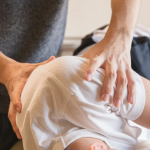 |
As another year comes to a close, it’s time to get the most of your benefits! At PhysioNow, this is a busy time for our clinic and we encourage all of our patients to take advantage and get the care they need. If you’re like most Canadians, your extended health care benefits reset at the end of the year. Maybe you’ve told yourself you’ll book that physiotherapy session “next week,” or you’ve been meaning to replace those worn-out orthotics but keep putting it off. The truth is, those benefits are there for a reason, to help you stay healthy, pain-free,…
Read More










